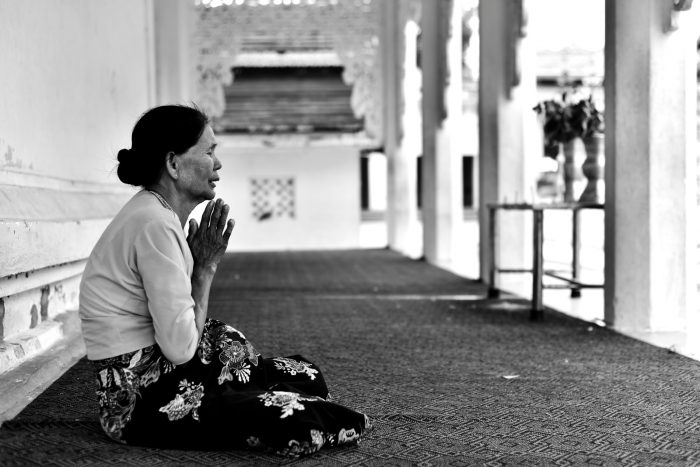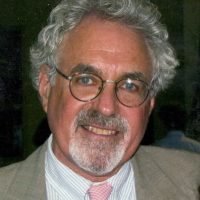What do health and happiness sound like?
And if they have a sound, can we utilize it to enhance our own well-being?
The answer is “yes,” and there’s not just one sound; there are many, but the different sounds have one thing in common—they’re all harmonious or coherent sounds.
The Vedic tradition of India is the source of yoga, meditation, and the health science known as Ayurveda. It’s a tradition that has been followed for centuries by yogis and sages seeking to perfect the functioning of the brain and body as a path to higher consciousness.
And as part of this tradition, accomplished yogis used Vedic sounds known as mantras in the practice of meditation, and they also chanted or listened to these sounds, understanding that different sounds had different effects, including the ability to heal disorders.
For over 50 years, there has been a growing interest in sound healing in the West, including at many hospitals and research institutions. On the Internet there are dramatic accounts of the potential in this area. In one instance, a father in Boston had suffered from a stroke and couldn’t speak. But he was able to tell his son that he wanted to watch his beloved Red Sox play baseball by singing, “Take me out to the ball game.”
Music or sound therapy actually began in the United States around World War I to help the wounded deal with pain. More recently, projecting sound vibrations on injured parts of the body has been used at the Duke University Medical Center, the Clinical Center of the National Institutes of Health, and other prestigious institutions. Researchers have found that vibration therapies can at least temporarily help patients with Alzheimer’s and with speech defects, and can distract from pain and help babies gain weight.
What’s behind sound healing?
According to string theory in physics, sometimes called the “theory of everything,” all particles in nature are just manifestations of the vibration of something more elementary. All matter, including the human body, is composed of underlying vibrations, which determine the characteristics of the molecules and atoms. And recent research suggests how vibrations heal when they work.
Researchers at MIT tell us that every cell of the body has electrical, chemical, and biological activity taking place inside it. The MIT research has led those involved to believe that they’ll soon be able to detect ailments simply from whether there are aberrant or inharmonious vibrations in the cells. This finds support in other research as well.
Around 2010, Dr. James Gimzewski, a professor of chemistry at UCLA, used sensitive measuring devices and found that healthy yeast cells vibrated at a constant rhythmic rate of about 800 vibrations per second. This produced a pleasant harmonic sound when the vibrations were amplified enough to hear them; however, the harmonious sound changed to a screaming or hissing when the cells were immersed in alcohol and started dying.
Researchers in England carried this exploration further and compared healthy to cancerous prostate cells. They were able to differentiate between the two just based on the harmonics of their vibrations. As one biologist who conducted the research said, “The difference between a healthy cell and a cancer cell is like listening to two large orchestras…but in the cancerous orchestra, the tuba is horribly out of tune.”
So, while different cells vibrate at different frequencies and amplifying the vibrations will result in different sounds, it appears that healthy cells vibrate in a harmonious or coherent manner (e.g., it’s highly rhythmic), whereas unhealthy cells give off sounds that are out of tune in some way.
While this itself offers promise, at least in the early detection of disease, how can we take this to the next step and actually cause permanent healing through the right sounds or vibrations?
Research on the ancient Vedic sounds may be paving the way.
In 1996, Dr. Hari Sharma, then Director of Natural Products Research at the Ohio State University Medical School, tested the effects of Vedic sounds (sounds categorized as Sama Veda chants) on diseased cells in laboratory cultures and compared it to the effects of the rock music of the band AC/DC. The Vedic sounds decreased the average growth and spreading of the diseased cells significantly, while the rock music had the opposite effect.
A few years later, Tony Nader, MD, PhD, a neurologist trained at Harvard and MIT, was joined by researchers from the Harvard Medical School and others. They tested Vedic sounds in a therapy that was brought to light by Maharishi Mahesh Yogi, a Vedic scholar best known for introducing the Transcendental Meditation technique in the Western world.
The Vedic sounds used by Dr. Nader were those traditionally understood to alleviate the symptoms of pain and disability, and they were applied in the study to those suffering from arthritic conditions. The researchers conducted two random control, double-blind studies (the gold standard in research) on persons who had suffered from arthritis for an average of 10.5 years, and the results were published in Frontiers in Bioscience. Of 176 patients with long-standing painful conditions of the spine and joints, 127 reported at least a 60 percent relief of pain and 64 patients had a 100 percent relief. This prompted one rheumatologist who witnessed the healing to say, “Modern medicine will never be the same.”
Despite the good results from this therapy, this is not definitive research and more needs to be done. But how are results like this even possible?
Dr. Nader’s studies explain that the healing from the Vedic sounds results from the phenomenon of resonance. Similar to how a tuning fork works, when particular Vedic sounds are projected on the disordered parts of the body, the dysfunctional part of the body can be reordered to its natural, healthy rhythms.
Dr. Nader worked for many years with Maharishi studying Vedic literature and its sounds. Coupled with his medical knowledge of the human anatomy, he found something startling about the correspondence of the Vedic literature and the physiology. He found a precise one-to-one mathematical correlation between the structure and function of the human physiology and the Vedic literature. For example, the Vedic literature (written in Sanskrit) has four chapters on yoga, which Nader found correspond to the four lobes of the brain. The four chapters on yoga contain, respectively, 34, 51, 55, and 55, verses which correspond to the 34, 51, 55, and 55 folds (called gyri) in the brain, each verse corresponding to a particular fold (e.g., longer verses corresponding to longer folds).
Dr. Nader’s explorations led him to find a similar correspondence between all the principal parts of the nervous system and the Vedic sounds contained in the principal texts of the Vedic literature—a correspondence too extensive to be just coincidence. The theory for healing is that if one lobe of the brain, for example, is disordered, it can be restored to normal functioning through the proper use of the sounds or vibrations in the corresponding part of Vedic literature.
If this is surprising, there’s an overriding understanding of Maharishi and other yogis from the Vedic tradition that may be even more surprising.
Dr. Nader’s research supports Maharishi’s statements that the vibrations in the Vedic literature are not just a replica of the human anatomy, but are really the vibrations and frequencies at the basis of the entire cosmos (i.e., the fundamental “strings” in all of nature), giving a more concrete meaning to the aphorism that “as is the microcosm, so is the macrocosm.”
According to Maharishi, these Vedic sounds were cognized by ancient seers. A cognition in this sense is something different from what modern psychology may mean when it speaks of cognition. In the East, it is well appreciated that knowledge can be gained subjectively by the most highly evolved or coherent minds, and the Vedic seers or sages were said to have been able to perceive the most basic fluctuations in nature. And what they perceived were not just random sounds or vibrations, but the detailed knowledge of how nature and the human body are structured and can be healed.
While the validity of knowledge gained in this way will be questioned by many, it may actually be a fairly common experience of great thinkers. Mozart, for example, said his compositions came to mind in a spontaneous way, “already finished” (the whole symphony playing out in his mind before he began to write the composition on paper), and “this is the best gift I have from my Divine Maker.” Beethoven said the same.
So, what really are the Vedic sounds? Maharishi and Dr. Nader tell us that just as a house comes with a blueprint from the architect to illustrate how the house has been built and can be repaired, these primordial sounds are actually the blueprint for how nature (including human physiology) is structured and how it can be reordered when it falls into disrepair.
The Vedic knowledge has already resulted in many practical applications. The Transcendental Meditation technique, the mental technique from the Vedic tradition, uses Vedic sounds known as mantras to resonate with the physiology and produce a uniquely calm and coherent state.
Over 600 scientific studies attest to its effectiveness in enhancing mental performance and overcoming anxiety, depression, PTSD, and many other disorders. And the ancient health science of Ayurveda has been revived in its purity in a form known as Maharishi Ayurveda. It provides advice from the Vedic literature on the daily health routines followed by yogis and sages for centuries, including when to rise, when to go to sleep, when to eat the main meal, what to eat for a balanced diet, the best foods for the immune system, and exercise and yoga positions that are best for each mind-body type.
The strategies used by the yogis and sages of antiquity are being validated by modern research in a wide variety of areas. And if the knowledge in the Vedic literature is really a blueprint for how to restore order or coherence wherever there is disorder, we have a new theory of everything.
And we’re just scratching the surface in understanding the value of this knowledge.
~
Reference: The Coherence Effect: Tapping into the Laws of Nature that Govern Health, Happiness, and Higher Brain Functioning by Robert Keith Wallace, Jay B. Marcus, Christopher S. Clark
~









Read 2 comments and reply